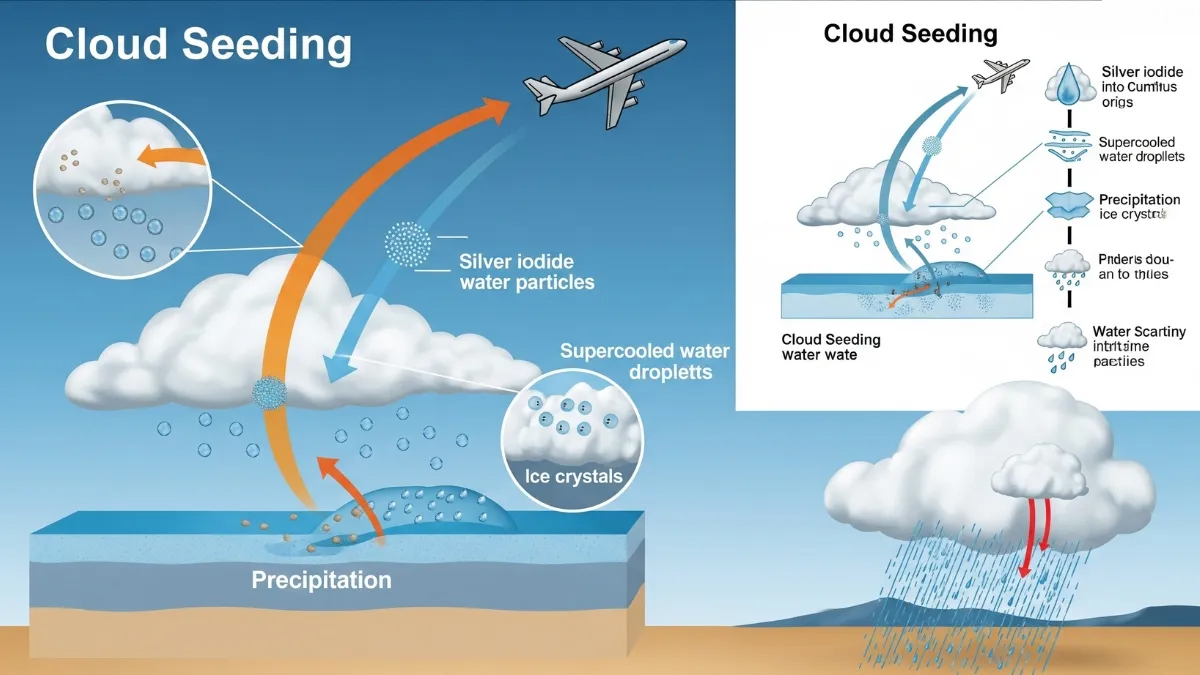Context:
The government of New Delhi recently initiated a pilot programme for cloud seeding over Delhi, aimed at inducing artificial rainfall to alleviate severe air pollution in the city. Flights by Indian Institute of Technology, Kanpur (IIT Kanpur) released seeding flares (silver iodide mixed with salt) into clouds over parts of Delhi.
However, while the trial was carried out, no significant rainfall resulted from the operation, and the expected artificial rain did not materialise in a meaningful way.
Why Didn’t It Cause Rain?
The moisture content in the clouds was only about 15‑20%, far below the ideal threshold for effective seeding. Without sufficient water content in the cloud, there will not be enough droplets to coalesce and fall as rain.
-
- For cloud seeding to work, clouds must have a certain vertical thickness, enough liquid water content, and favourable dynamics (e.g., updrafts, convergence).
- Delhi’s skies at the time were dominated by dry, shallow cloud cover or simply lacked the right cloud type (especially in the winter/post‑monsoon season).
- For cloud seeding to work, clouds must have a certain vertical thickness, enough liquid water content, and favourable dynamics (e.g., updrafts, convergence).
Implications:
-
- The trial shows the technical complexity of cloud‑seeding i.e it is weather‑dependent, not a guaranteed rainfall machine.
- For Delhi, in its winter pollution season, the atmospheric conditions (dry air, shallow clouds) are not favourable for this method.
- Success of such interventions depends on the right meteorology + logistics + timing.
- The trial shows the technical complexity of cloud‑seeding i.e it is weather‑dependent, not a guaranteed rainfall machine.
About Cloud Seeding:
Cloud seeding is a form of weather modification aimed at enhancing precipitation from clouds. It involves introducing certain substances into clouds to encourage condensation and increase rainfall.
· Globally, it has been used since the 1940s, with countries like the United States, China, Israel, and the UAE adopting it for water management.
· Cloud seeding relies on the principle of cloud microphysics. Clouds contain water droplets or ice crystals that may not be sufficient to precipitate naturally.
· Seeding agents such as silver iodide, potassium iodide, sodium chloride, or dry ice (solid CO₂) act as condensation or ice nuclei, facilitating droplet coalescence and precipitation.
Conclusion:
While the cloud seeding initiative in Delhi is a bold attempt to induce artificial rain and combat dangerous air‑quality levels, the early results remind us of the complex interplay of meteorology and technology. The absence of favourable clouds and sufficient moisture meant that rainfall did not materialise. For the city’s long‑term pollution battle, cloud seeding may offer occasional relief—but the real victory will come from reducing emissions, improving public transport, controlling agricultural burning and managing dust and industrial sources.







